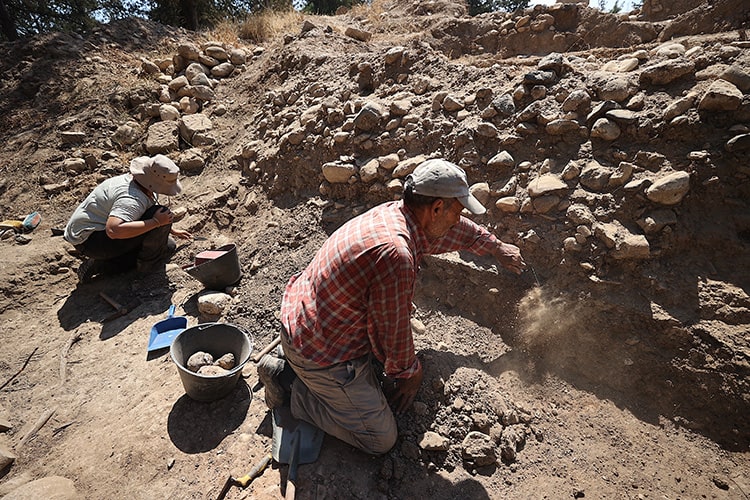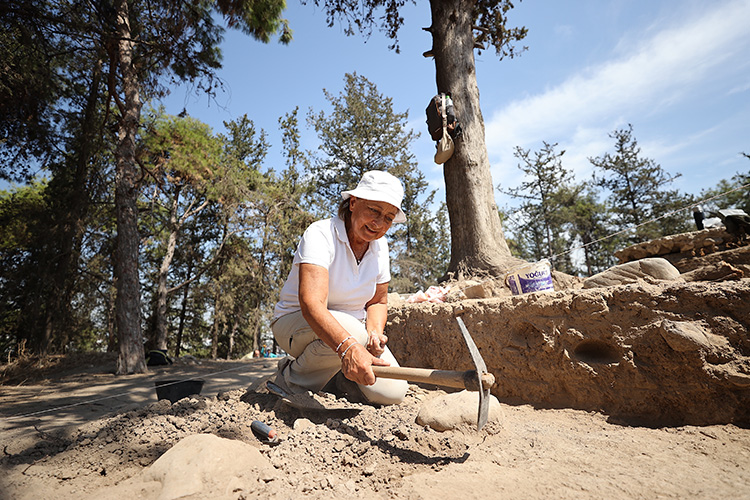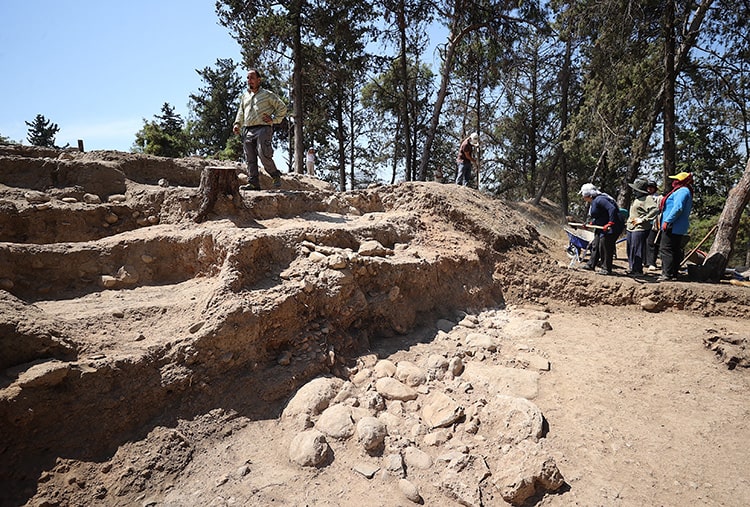Archaeologists continue to work on the Hittite-era fortification structure unearthed at the 9,000-year-old Yumuktepe Mound in Mersin province, Türkiye.
The uninterrupted settlement from the Neolithic period to the present day makes Yumuktepe a “cradle of civilizations”.
The fact that traces of the first castle-like structure in the world were found in the layer dated to 4500 BC makes Yumuktepe interesting in the world of archaeology.

Yumuktepe 30th period excavations continue under the direction of Prof. Dr. Giulio Palumbi, Professor of Archaeology at the Aldo Moro University of Bari in Italy.
The Hittite fortification structure was uncovered in 1939. A team of 20 people including hittitologists, archaeologists and art historians are working on the mound.
Prof. Dr. Giulio Palumbi said, “In the 1930s-1940s, John Garstang from the University of Liverpool conducted studies here, structures with the foundations of the Hittite Period fortification wall were identified.”

Emphasizing that finding the continuation of the Hittite Period fortification structure identified by John Garstang is also among his goals, Palumbi said:

“John Garstang says that there was a very important settlement at Yumuktepe during the Late Bronze Age. We also aim to obtain new findings from the Early Bronze Age, for which we have very limited data so far since the previous excavations. In this way, we aim to increase our knowledge about periods that we knew little about in previous years. We are trying to understand the role of Yumuktepe in Western Anatolia and the Mediterranean in the 3rd millennium BC and the level of its communication with these regions.”
Cover Photo: Serkan Avci/AA




